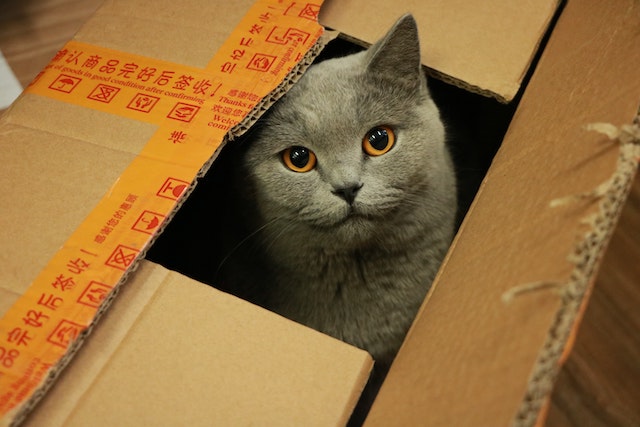Moving House With A Cat
It’s a simple fact that cats are members of the family, no one can deny that and it’s extremely important they are handled with the utmost care when moving house.
From packing to settling into your new home, each stage of the move needs to be thoroughly planned and executed to ensure your cat has a smooth transition to avoid stress.
In this blog, we’ll explain what you can do to prepare them for the move, how to reduce their anxiety on moving day and what you need to do to help them adjust to their new home.
Preparation
Packing Materials
It’s important for your cat get familiar with the packing materials. Before your start boxing up your belongings, allow some time between from when the packing materials arrive and the moment you begin to pack. This timeframe will help your cat get used to them without the feeling of uncertainty watching their home suddenly change. Perhaps let them play with a few rolls of tape and place a treat near a pile of boxes to associate the packing materials with fun and food.

Use Pheromones
If your cat becomes visibly distressed, try using a pheromone diffuser. These diffusers gently release the same feline phenomes (FFP) that cats use to mark their territory by rubbing their faces on objects and furniture. The process essentially makes them feel safe with familiar surroundings.
Safe Space
Create a safe space for your cat that’s out of the way of areas where you plan to pack and dismantle. Set up their bed, litter tray, water and food bowls in a quiet room where they won’t be disturbed. Spend some time in that room with your cat and give them some toys to play with.
Microchip
It’s not uncommon for cats to return to their old home after moving and it’s important to update your cat’s ID collar. If you haven’t microchipped your cat yet, it would be wise to get it done before the move.
Moving Day
Get Help
Call in favours from friends and family who can take care of your cat. If that’s not possible, try to find a local cattery and book early. By doing this, your cat will feel less stressed without seeing its familiar and safe environment being turned upside down.
Use the Safe Space
If you can’t find someone to look after your cat or a cattery, keep your cat in the safe room for as long as possible. Clearly label this room so the removal company or anyone else who is helping knows not to go in there. Your cat might sense something is going on with the commotion of moving so regularly check to see if they’re ok.
Transporting
When it’s time to move your cat, use a car safe cat carrier. This will keep them safe and secure and if they get anxious and consider using a sedative for the journey but get medical advice from a vet.
Settling In
Check for Danger
Before releasing your cat into the new property, it’s extremely important to check for anything that could pose a danger such as nails in the floor, exposed wires and open windows. The last thing you want is for your cat to hurt themselves and associate that with their new home.
Time to Adjust
Cats warm to familiar objects and you should pick a room in your new home that contains the most recognizable furniture for them to stay in for the first couple of nights. This will help them to adjust and alleviate stress.
Returning To Their Old Home
If your old property is nearby, it’s not uncommon for cats to return there. Make sure the new occupiers have your contact information so they can tell you if this happens. If this becomes a frequent problem, there are some things you can do:
- Tell the new occupiers to discourage your cat from staying by not providing food and attention.
- Ask the new occupiers to block the cat flap.
- Feed your cat with small frequent meals to encourage them to stay in the new property.
We hope this blog outlines what needs to be done when moving house with a cat.

